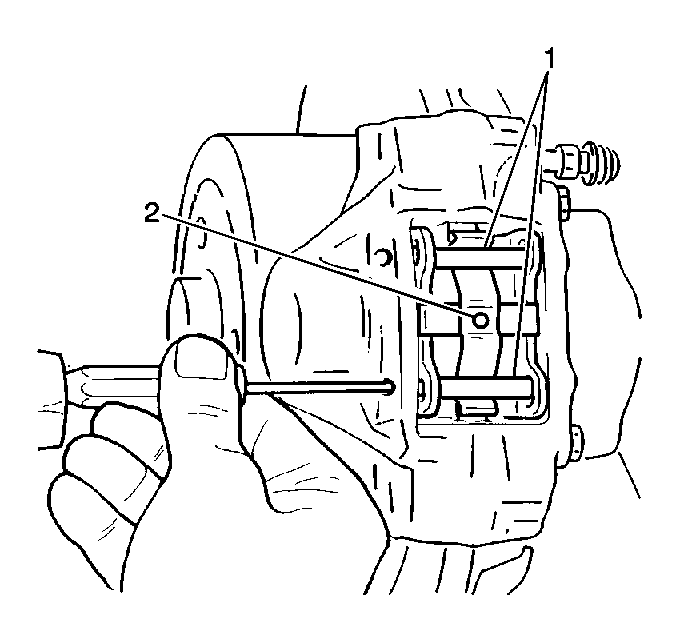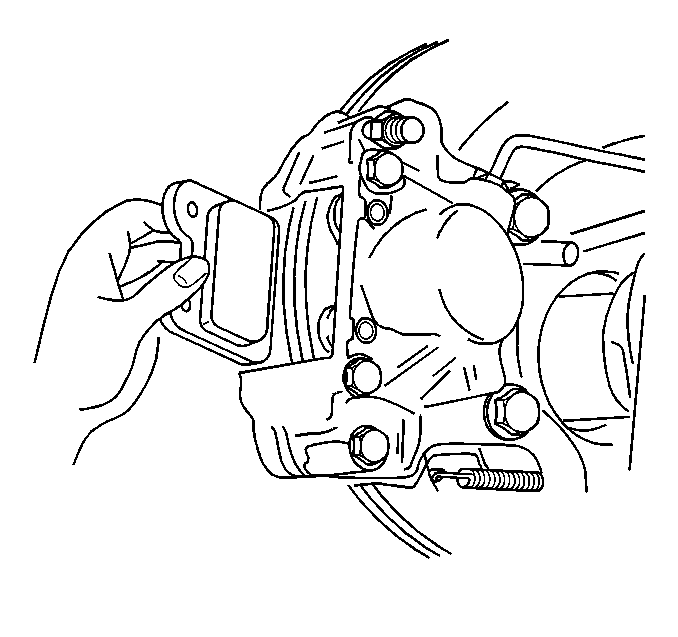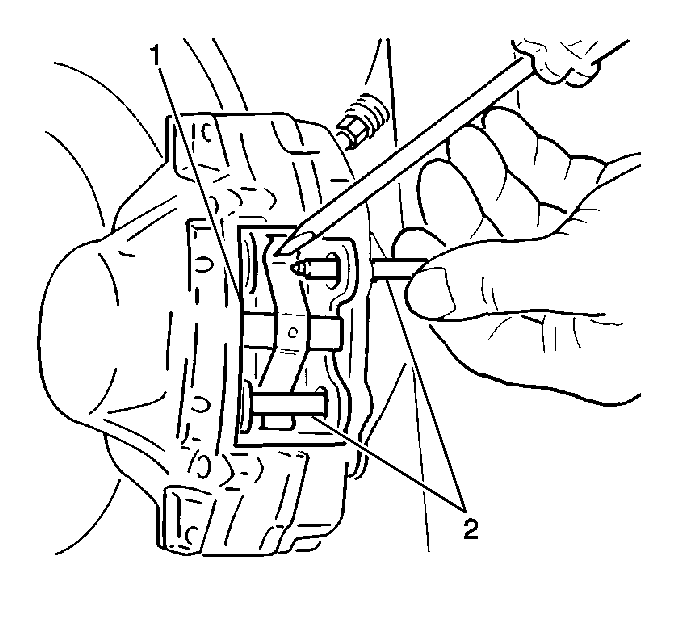For 1990-2009 cars only
Removal Procedure
Notice: Do not use lubricated compressed air on brake parts as damage to rubber components may result.
- Remove one-third of the brake fluid from the master cylinder reservoir.
- Raise and suitably support the vehicle. Refer to Lifting and Jacking the Vehicle in General Information.
- Remove the tire and wheel assembly. Refer to Tire and Wheel Removal and Installation in Tires and Wheels.
- Use a screwdriver to gently compress the brake caliper pistons into the caliper housing bore to provide clearence between the brake linning and rotor.
- Use a punch to drive the rear brake caliper retaining pins (1) out of the rear brake caliper from the outside inward.
- Remove the rear brake caliper spring retainer (2).
- Remove the brake pads.
- Inspect the pins for corrosion and/or damage. Replace the pins as necessary.
- Inspect the brake pads for wear.
- Inspect the brake pads for maximum taper of 0.15 mm (0.006 in). Replace with a new brake pad set if any pad tapers beyond the specification.


Installation Procedure
Important:
• Use clean brake fluid to lubricate all the rubber parts to ease
assembly. • Replace brake pads in axle sets only. • The torque values specified are for dry, unlubricated fasteners. • Perform the service operations on a clean bench, free from all
mineral oil materials.
- Install the brake pads.
- Perform the following steps to install the rear brake caliper retaining pins:
- Install the tire and wheel assembly. Refer to Tire and Wheel Removal and Installation in Tires and Wheels.
- Lower the vehicle.
- Fill the master cylinder reservoir.
- Make 20 stops from 48 km/h (30 mph) using medium to firm brake pedal pressure to burnish the brake rotors.

| 2.1. | Use a punch to drive the first pin (2) into the caliper. Ensure the pin (2) inserts through the holes in the brake pads. |
| 2.2. | Install the rear brake caliper spring retainer (1). |
| 2.3. | Install the second pin (2). Ensure the pin (2) inserts through the holes in the brake pads. |
Important: It is important that new braking surfaces be broken in or burnished after brake pads are installed and/or after rotors are refinished. Avoid overheating the brakes.
